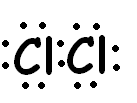What is the oxidation states?
- It is a numerical representation of an atom's share of the bonding electrons. In ionic compounds, it is equal to the ionic charge. In covalent compounds, it is the average charge assigned to an atom according to electronegativities.
- Either the actual charge of an atom (ion) in a substance, assuming the atom exists as a monatomic ion, or a hypothetical charge assigned by simple rules.
- The charge an atom would have in a substance if the pairs of electrons in each bond belonged to the more electronegative atom.
- The number of electrons that must be added or subtracted from an atom in a combined state to convert it to the elemental form.
Rules for Oxidation States
1) In its elementary state the oxidation number of an atom is zero. For instance the oxidation number for chlorine Cl2 or oxygen O2 is zero.
2) All Group IA (alkali metals) elements have an oxidation number of +1 in any compound. All Group IIA (alkali earth metals) elements have an oxidation number of +2 in any compound.
3) Fluorine has an oxidation number of -1 in all of its compounds.
4) Chlorine, bromine and iodine have an oxidation number of -1 in any compound of halogen with a less electronegative element.
5) Usually oxygen has an oxidation number of -2 in a compound. Peroxides, like H2O2 and Na2O2, are the major exceptions to this and in these cases oxygen has an oxidation number of -1.
6) Hydrogen has an oxidation number of +1 in most of its compounds. In hydrides (compounds like NaH), however, in which hydrogen is bonded to metallic elements, hydrogen has an oxidation number of -1.
7) The sum of the oxidation numbers of the atoms in a compound always equals zero. For polyatomic ions, the oxidation numbers of the atoms add up to the charge of the ion.
Step | Acitivity | Cl2 | HCl |
1 | Identify the type of substance | Uncombined element | Diatomic covalent compound |
2 | Draw the Lewis dot structure and determine bond polarity |
|
|
3 | For each bond, assess which of the two atoms has a greater attraction for the bonding electrons | Both Cl atoms contribute to the bond. Both atoms have the same electonegativity, so neither atom attacts the bonding electrons more than the other one. Their share in the bond is equal. | Both atoms contribute to the bond. The Cl atom is more electronegative than H. It attracts its own bonding electron plus that from H, creating a permanent dipole. Cl has the greater share of the bonding electrons. |
4 | Assign each atom an oxidation state (or charge) based on the results of step 3. | Cl = 0, Cl = 0 | H = +1, Cl = -1 |
5 | Add all of the assigned oxidation states. They should equal zero or the total charge of the ion. | 0 + 0 = 0 | (+1) + (-1) = 0 |
Bibliography
![]() Environmental Chmeistry
Environmental Chmeistry
You want to know more about Oxidation States?
![]() Table of Common Oxidation States for Ions
Table of Common Oxidation States for Ions
![]() Kiwi Web
Kiwi Web
![]() How does eletric current flow?
How does eletric current flow?
![]() How do batteries work?
How do batteries work?


